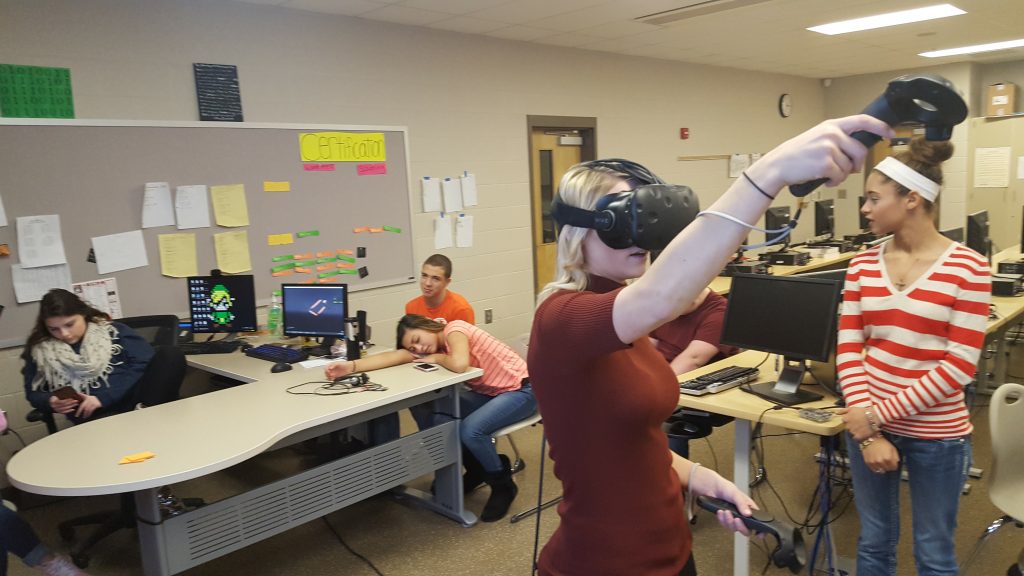
The school year barely underway, we’ve already set a new #WorldsFirst. Rockettech students were the first students in the world to experience the HTC Vive virtual reality system. As part of a research study with foundry10, my students and I hope to help other
educators around the world discover some “best practices” for how to utilize various VR systems.
How we are using VR in School
Computer Programming: We are creating VR experiences in Unity to test on two platforms, Oculus Rift and Google Cardboard. There are limited tutorials out there for VR specific, but we’re starting out with Smash Cube, Look to Fly, and Look to Teleport (Google Cardboard). The scaffolding that accounts for differentiation is:
Give students a completed Unity program that has previously been tested to work. They export the the “build” and test it on the Oculus Virtual Reality (OVR). Early, easy success builds confidence and momentum.
Students ADJUST one or more scripts (insert differentiation here), rebuild and test on OVR.
Students combine two or more scripts into a functioning script to customize their game
Students write an all new script (no copy/paste), referencing the Unity Documentation, forum, and simple Google searches like “Unity collect coins”
Social Studies: There is an opportunity give a moderately realistic first-person experience to students of events across any locations and times. For instance, how does a student born in 2000 get a handle on the magnitude and impact of the events of Sept 11, 2001? One potential experience is 8:46, referencing the time the first plane hit North Tower of the World Trade Center.
One thing to be careful of when using this with students: At the end of the 9/11 sim, you have the option of jumping out a broken window to your death. At first my reaction was to shut down the sim and not let other students experience it. I asked the girl who experienced it how it made her look at those events. She replied, “I knew there were planes that hit the buildings, but I never thought about those people that couldn’t get out or away from the fires. You feel so helpless.” This gives students a way to connect with events they weren’t around for. It’s a first person perspective of history. I decided that guidance and discussion is very necessary, just as it would be when watching Schindler’s List.
This post is part of a series on using VR in the classroom.
